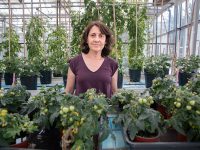
In high school, one of the most common exercises in applied genetics was to find out the blood groups of our family members in order to infer their genetic heritage. This activity seems fun – and it is – until we find families whose genetic make-up does not match, either because there is an adopted son or daughter, or because of an unexpected biological non-paternity. Certainly, because of this potential breach of privacy of intimate genetic data, this «hands-on» learning activity is not currently encouraged in schools.
However, knowing your blood group is highly recommended. We know that not all blood transfusions are possible and compatibility needs to be considered. If we think of the most common system, ABO (determined by the presence of specific sugars in the membrane of red blood cells), all genetic variants come from the same gene, which codes for an enzyme capable of adding this final sugar in different ways. If we receive the gene on both our father’s and mother’s side with mutations that prevent the production of a functional enzyme, we are group O, while A and B are co-dominant variants of O. Blood group compatibility is determined by the fact that these sugars are highly immunogenic – i.e. our body makes antibodies against them. In classical terminology we were told that an O person was a «universal donor» and could give blood to all other groups but could not receive blood from any other group, while an AB person was a «universal recipient» and could only give blood to people of their own blood group.
However, these explanations do not tell us why we have different blood groups. The truth is that we do not yet have a clear answer. All blood groups are viable and have no known health problems. The difference probably lies in the different resistance of each blood group to certain types of viruses and infections. However, if we look at all human beings as a whole, we find all blood groups, with greater or lesser frequency depending on the geographical area of origin.
We find the highest proportion of O individuals among Native Americans. In some Central Asian countries we find a relatively high percentage of B individuals, although they are a minority group overall. In contrast, blood group A is highly represented and distributed. There is a very small number of people – about four in a million – who have mutations in another gene and are neither A, B nor O. In fact, they are completely incompatible with transfusions of any of these blood groups. These people have the Bombay blood group (in this city and the surrounding region of India, this exceptional blood group occurs on average in 1 in 10,000 people).
The origin and maintenance of blood groups is still a mystery shrouded in the mists of the evolutionary past. Although some fossil remains of other hominins, such as Neanderthals and Denisovans, have been identified and sequenced, we know that they already had the same blood groups, A, B and O. If we go further and analyse other apes, chimpanzees share groups A and O with us, while gorillas have only group B. But the big revelation comes when we analyse other hominoids and apes, from both the Old and the New World (for example, macaques or gibbons), because we also find the presence of the three blood groups, which would indicate that we are talking about very ancient mutations, dating back more than twenty million years, which we share with many other fellow creatures. The question is: how were the three blood groups selected and maintained in the human species? We still do not know the answer to this great question.





